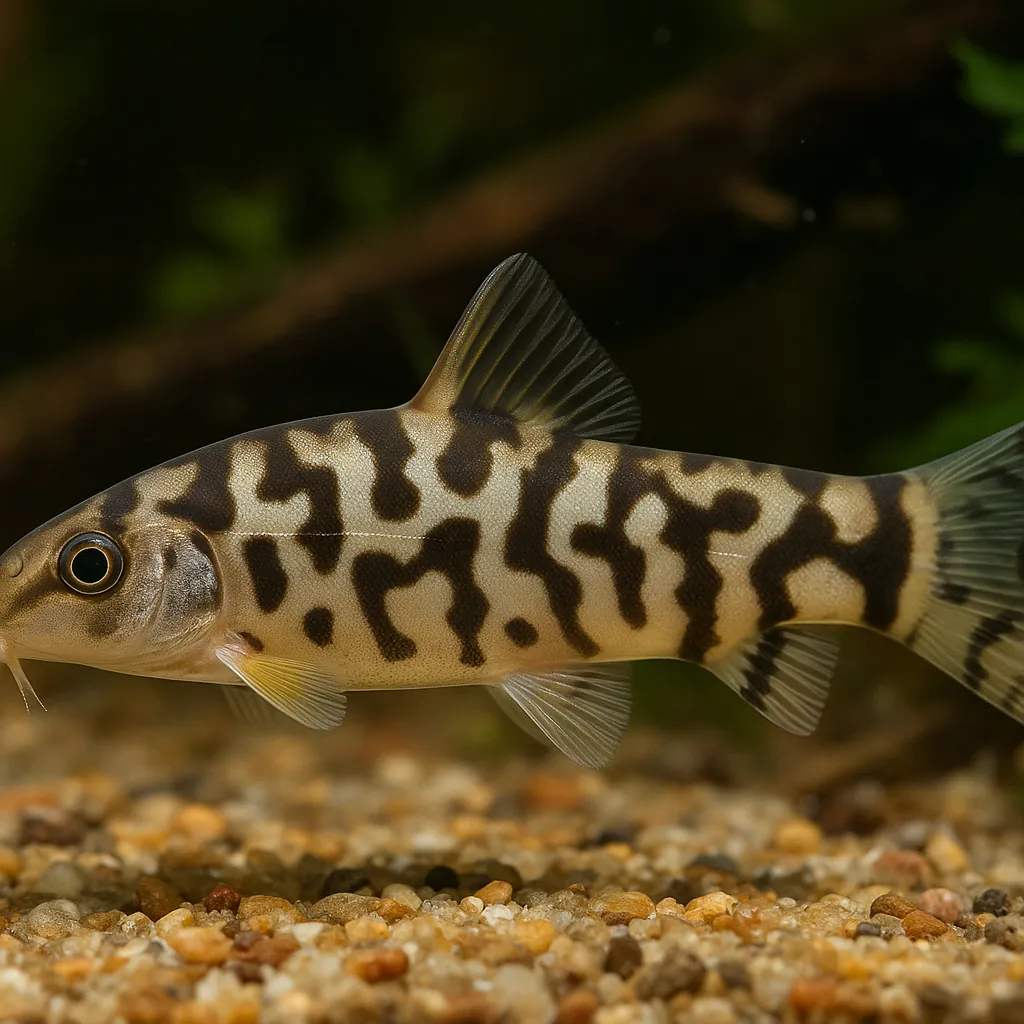
YoYo loach
Introduction
The Yoyo loach (Botia almorhae), also known as the Pakistani loach or Almora loach, is a captivating freshwater fish cherished by aquarists for its playful nature and striking patterns. Its distinctive dark and light markings often resemble the word "yoyo," inspiring its common name. Suitable for both beginner and intermediate fishkeepers, the Yoyo loach is relatively hardy but thrives best when its specific care requirements are met.
What makes the Yoyo loach a popular choice among aquarists?
Its unique appearance, active behavior, and ability to control pest snails make it a favorite in community tanks.
Is the Yoyo loach suitable for beginners?
Yes, with proper care and attention to its needs, beginners can successfully keep Yoyo loaches.
Care and Environment
Providing an optimal environment is crucial for the health and happiness of Yoyo loaches. Here's a comprehensive guide to their care:
What is the minimum tank size for a Yoyo loach?
A minimum of 120 liters (30 gallons) is recommended for a single Yoyo loach, with larger tanks needed for groups.
What are the ideal water parameters for Yoyo loaches?
Maintain a temperature between 24-28°C (75-82°F), pH levels of 6.5 to 7.5, and water hardness between 5 to 12 dGH.
How should the tank be set up for Yoyo loaches?
Use a soft substrate like sand to protect their sensitive barbels. Provide ample hiding spots with caves, driftwood, and plants. Ensure moderate lighting and maintain a gentle water flow to mimic their natural habitat.
What should I feed my Yoyo loach?
Yoyo loaches are omnivorous. Offer a varied diet including high-quality sinking pellets, flakes, and occasional live or frozen foods like brine shrimp and bloodworms. They also appreciate vegetable matter such as blanched zucchini or cucumber.
Are there any specific challenges in keeping Yoyo loaches?
They are sensitive to poor water quality and sudden changes in parameters. Regular water changes and monitoring are essential. Additionally, they can be jumpers, so a secure tank lid is necessary.
Origin and Habitat
Yoyo loaches are native to the slow-moving and still waters of the Ganges basin in northern India and possibly Nepal. They inhabit clear, warm, and slightly acidic waters rich in oxygen. These environments often feature rocky substrates and abundant aquatic vegetation, providing ample hiding spots and foraging opportunities.
Where are Yoyo loaches originally from?
They originate from the Ganges basin in northern India and possibly Nepal.
What type of natural habitats do Yoyo loaches prefer?
They thrive in clear, warm, and slightly acidic waters with rocky substrates and abundant vegetation.
Temperament and Compatibility
Yoyo loaches are known for their active and social behavior. They are best kept in groups of at least 4-6 individuals to encourage natural behaviors and reduce stress. While generally peaceful, they can exhibit territorial tendencies, especially towards other bottom-dwelling species.
Are Yoyo loaches aggressive?
They are generally peaceful but can display territorial behavior, particularly with other bottom dwellers.
What are suitable tank mates for Yoyo loaches?
Compatible tank mates include medium-sized barbs, tetras, gouramis, and rasboras. Avoid housing them with slow-moving or long-finned species, as Yoyo loaches may nip at their fins.
Can Yoyo loaches be kept alone?
It's not recommended. They thrive in groups and may become stressed or reclusive if kept singly.
Interesting Facts
Yoyo loaches possess several intriguing traits that endear them to aquarists:
- They are known to produce clicking sounds, especially during feeding, which adds an auditory dimension to their presence in the tank.
- Yoyo loaches are effective at controlling pest snail populations, as they naturally feed on small snails.
- Breeding Yoyo loaches in captivity is rare and challenging, with most specimens in the aquarium trade being wild-caught.
Do Yoyo loaches make sounds?
Yes, they produce clicking noises, particularly during feeding times.
Can Yoyo loaches help control snail infestations?
Absolutely, they are known to feed on small snails, helping manage snail populations in aquariums.
Sources
All information in this article has been gathered from the following reputable sources:
Overview
Recommended Tank Size 52.8 Gallons (for groups of 4 or more) |
Minimum Group Size 4 |
Minimum Tank Volume 31.7 Gallons |
Maximum Adult Length 5.9 inches |
Average Adult Length 3.9 inches |
Shoaling (6+ required) Yes |
Preferred Water Type Freshwater, soft, slightly acidic to neutral |
Temperature Range (°C) 24-28 |
pH Range 6.5-7.5 |
Water Hardness (dGH) 5-12 |
Typical Lifespan (years) 5 years |